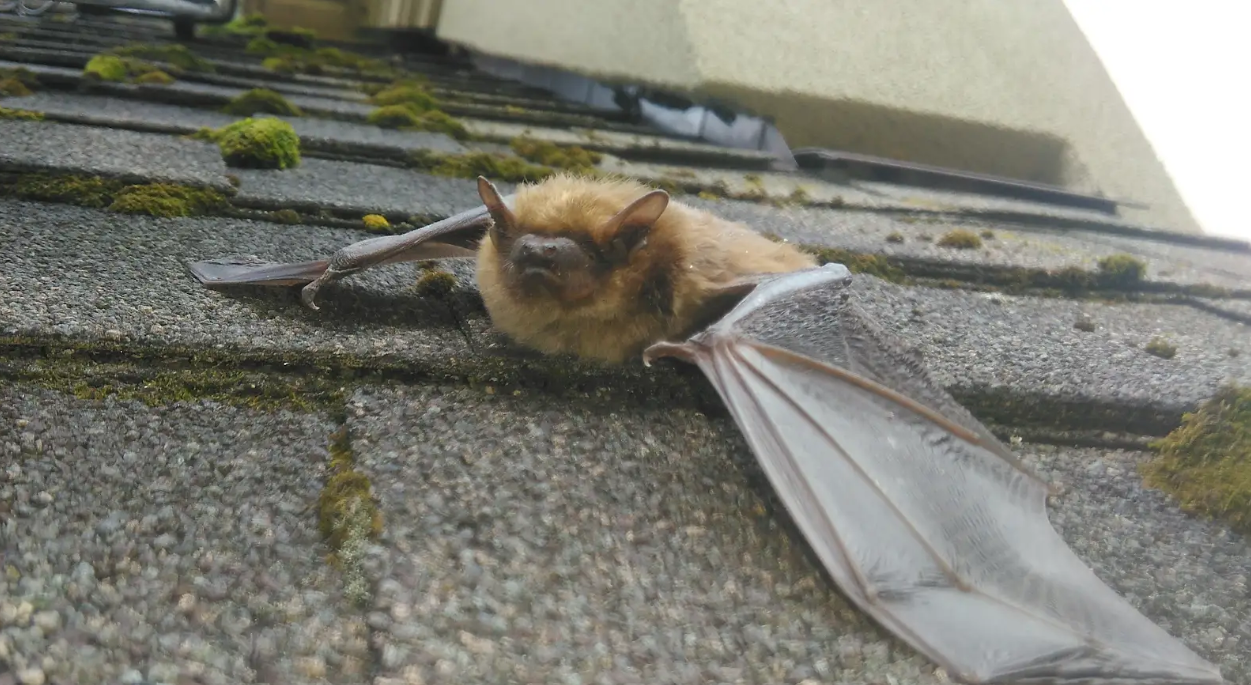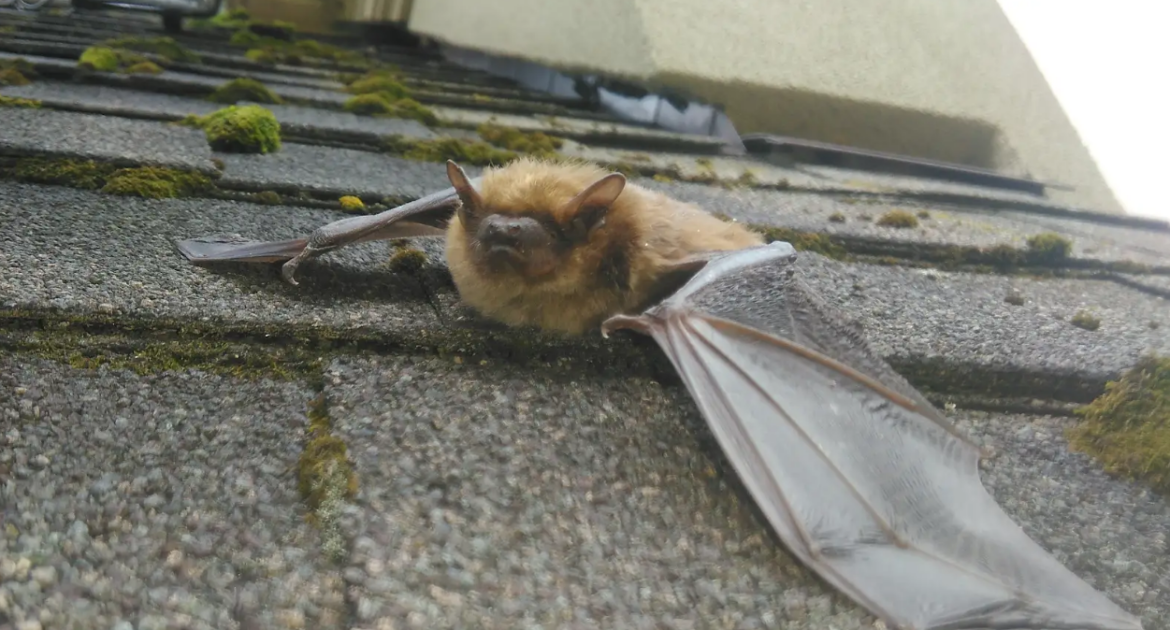Bats may be fascinating creatures, but finding them roosting in your home is another story. They can damage your property, leave behind droppings, and turn your attic into a space you’d rather avoid. If you’re facing this issue, acting quickly might feel like the right move—but when it comes to bat removal, timing is everything. Not only does it impact the success of the removal, but it’s also essential to ensure it’s done responsibly and humanely.
For homeowners in Columbus, the best time to remove bats is in the fall. According to the Ohio Department of Natural Resources, this is when young bats have matured enough to fly on their own, allowing for safe and humane exclusion from your home. Attempting to remove bats during other times—like the summer, when pups are still dependent, or the winter, when bats are in hibernation—can cause significant harm to the animals and create more challenges for you. That’s why it’s important to follow Ohio’s guidelines for bat removal and rely on trained professionals to handle the job.
At Skedaddle Humane Wildlife Control, we understand the unique needs of Columbus homeowners when it comes to wildlife issues. Our team uses methods that prioritize the safety of your home and the bats, aligning with local regulations and expert recommendations. Whether you’re dealing with a roost in the attic or just want to prevent future issues, we’ll guide you through solutions that work for everyone involved.
Why Proper Timing Matters for Bat Removal?
What’s the optimal time for bat removal in Columbus? It might surprise you to learn how much timing affects bat removal. Bats are a protected species, meaning there are laws in place to safeguard them. For example, in Ohio, you can’t harm them or remove them in ways that threaten their population. This is why professionals follow strict rules to avoid breaking the law or causing harm.
Beyond legal reasons, timing also impacts how effective removal will be. Choosing the right time of year reduces the chances of incomplete removal, such as bats lingering after the process. It also ensures their exit doesn’t lead to bigger issues, like separated pups or unsealed entry points. Removing bats at the right time means your home stays safe while also protecting the animals.
When you act at the wrong time, it not only worsens the problem but can also lead to extra expenses down the road. That’s why we always recommend reaching out to experts for guidance—removing wildlife is never a good DIY project. Done improperly, it may leave you dealing with noises, droppings, and damage for longer than necessary.
A Seasonal Guide to Bat Removal
Timing is key when removing bats because of their life cycle and behavior patterns. Narrowing it down by season helps make the decision easier.
Spring (March to May)
Spring is a season of transition for bats. They come out of hibernation and begin preparing for their busiest time of year. Early spring is ideal for inspections. At this point, bats are active but haven’t yet begun giving birth to their young. If you’ve noticed activity in your attic, like squeaking or fluttering noises, this is the time to check for entry points and clean up any small messes.
However, late spring is when things get more complicated. During this period, mother bats start giving birth to pups, which are completely dependent on them. Since baby bats can’t fly yet, you can’t use exclusion methods like installing one-way doors to guide the adults out. Doing so would trap the pups inside, causing them to die, which is both inhumane and will leave you with another problem to clean up.
Takeaway: Early spring can help with spotting problems and preparing for removal later, but if you wait until pups are born, you’ll need to put off removal until they’re more independent.
Summer (June to August)
By June, most bats are caring for their young. Mother bats are busy looking for food and returning to feed their pups, who still can’t leave the roost. Unfortunately, this makes bat removal very tricky during the summer. Separating the pups from their mothers can cause several problems. Pups left inside will starve, die, and potentially begin to decompose within your walls or attic. On top of that, trying to remove wildlife in summer often fails because new adult bats will continue finding ways inside.
Mid to late summer is also when bat activity tends to peak, which means more noise, stronger smells, and growing frustration for homeowners. While exclusion may sound like the answer, it’s much better to wait for the right season to avoid making the issue worse.
Takeaway: Summer is not recommended for bat removal since young bats need more time to develop.
Fall (September to November)
Fall is by far the best time for bat removal. By this point, the young bats are old enough to fly and find their own food. Since the weather is cooling, bats naturally begin leaving their roosts to migrate or find places to hibernate for the winter. This makes exclusion devices highly effective, as they’ll guide bats out for good without the risk of trapped pups.
Fall is also the perfect time to seal entry points after removal, ensuring bats won’t return. By addressing the problem during this season, you prepare your home for the long winter months ahead and enjoy peace of mind knowing the animals are no longer inside.
Takeaway: If you’re looking to remove bats safely and humanely, fall is the optimal time.
Winter (December to February)
During winter, bats slow down and enter hibernation. They find dark, enclosed spaces where they can stay hidden for months without much activity. For homeowners, this means bats will be tucked away deep within attics, walls, or roof spaces. Exclusion methods, which require bats to actively leave the house, won’t work because of their inactivity.
Some homeowners won’t even realize there’s an issue during winter because bats are so quiet. But for those who do know, waiting until spring is the only option. Attempting removal in winter risks disturbing their hibernation, which can harm the bats or force them to move deeper into inaccessible areas of your home.
Takeaway: Winter makes bat removal difficult but provides an opportunity to prepare for action in early spring.
Key Signs That Bats Are Present
Not sure whether you’re dealing with bats? Here are some common signs to look for:
- Noises in the attic: Bats are most active at dusk and dawn. If you hear light scratching, fluttering, or even squeaking sounds in your attic, this could mean they’ve moved in.
- Droppings near entry points: Bat droppings, known as guano, often build up near entry points or in the attic. They resemble small pellets and may accumulate in noticeable piles.
- Unpleasant odors: Guano and bat urine have a strong ammonia-like smell that becomes harder to ignore over time.
- Stains or smudges near holes: Bats leave dark, oily stains around small openings where they regularly enter and exit your home.
If you notice any of these signs, it’s a good idea to investigate further or call in wildlife removal experts.
How to Bat-Proof Your Home
Once bats are removed, it’s essential to take steps to keep them out for good. Prevention is the best way to avoid repeat problems.
- Seal entry points: Look around your roof, siding, and vents for any small holes or gaps. Bats can squeeze through even tiny openings, so everything needs to be sealed.
- Use exclusion devices properly: Exclusion devices, such as one-way doors, allow bats to leave but prevent them from returning. The timing of installation is critical to ensure the animals aren’t trapped inside.
- Maintain attics and vents: Keep your attic dry and well-ventilated. Repair any loose panels or broken vents to discourage animals from nesting inside.
Taking these steps in the right sequence will ensure your home stays bat-free year-round.
Leave It to the Experts
Fall is the ideal season for bat removal in Columbus, offering the perfect opportunity to safely and effectively handle the problem. By this time, young bats are ready to leave, ensuring humane and successful exclusion. Choosing professional services is vital for safe and legal removal, and it sets your home up for long-term protection.
At Skedaddle Humane Wildlife Control, we’re here to help with all your wildlife challenges. Using methods that align with the Columbus bat removal seasonal guide, we ensure thorough results without harming the animals. Don’t wait—contact us today to learn more or request a quote. Together, we’ll make your home bat-free and bring you peace of mind!




